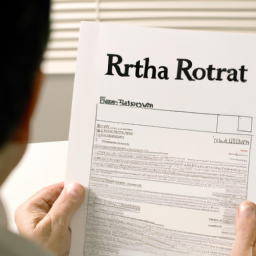It's important to understand the Roth IRA income phase-out ranges, especially in 2021 when the new retirement law changes have made it easier for high earners to make more contributions to their retirement accounts. This article will provide an overview of the Roth IRA rules and help you maximize your contributions in 2021.
First, let's look at the Roth IRA income phase-out ranges. Everyone, regardless of whether they are participating in an employer-sponsored retirement plan, is subject to the same income phase-out ranges. For 2021, single filers making more than $139,000 or married couples filing jointly with an income of more than $206,000 are not eligible to contribute to a Roth IRA.
The new retirement law changes that have made it easier for high earners to make more contributions to their Roth IRA. For example, those who are at least 50 years old and have maxed out their contribution limit can now make catch-up contributions up to $1,000 more.
Another important rule to consider is that if your earned income for the year is less than the IRS annual contribution cap, your contributions will be limited to the amount of earned income. For 2021, the IRS annual contribution cap is $6,000, so if your earned income is only $3,000, your contributions will be limited to $3,000.
In addition, those 50 and older can contribute an additional $1,000, bringing their total contribution limit to $7,000. This additional $1,000 is known as a catch-up contribution and can be used to help high earners maximize their contributions.
Finally, it's important to note that Roth IRA have an annual contribution limit of $6,000 in 2021. This means that if you are eligible to contribute to a Roth IRA, you can contribute up to $6,000 in 2021. In addition, some brokers offer IRA accounts that allow you to receive a bonus on eligible contributions up to the annual contribution limit. For example, Robinhood offers both traditional IRAs and Roth IRA that can help you maximize your contributions.
If you are married and one spouse has a Roth IRA and the other does not, it may be beneficial to create a spousal IRA for the non-contributing spouse. This will allow the non-contributing spouse to make their own contributions up to the annual contribution limit.
The new retirement law has also made it easier to rollover funds from a traditional IRA to a Roth IRA. Starting in 2024, individuals will be allowed to rollover funds from a traditional IRA to a Roth IRA. The amount rolled over is subject to the annual Roth IRA contribution limit. Additionally, the same beneficiaries can be named for both the traditional IRA and the Roth IRA.
Finally, it's important to remember that contributions to Roth IRA are not tax-deductible. However, they can still help you maximize the annual IRS limits for retirement savings. So, if you are eligible to contribute to a Roth IRA in 2021, you should consider making the maximum contribution to maximize your retirement savings.
